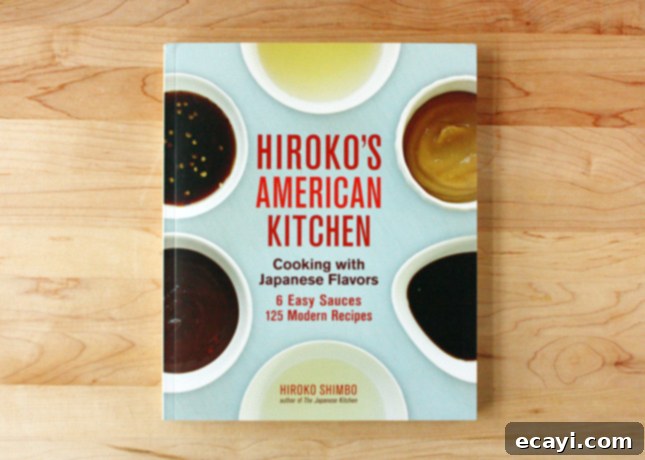Elevate Your Table: Japanese Fried Salmon with Avocado and Dill-Daikon Broth – A Hiroko Shimbo Recipe
Experience the exquisite balance of flavors and textures in this remarkable dish by acclaimed chef Hiroko Shimbo. Delicate Japanese fried salmon and lightly crisped avocado are elegantly presented in a savory dill-daikon broth, promising a culinary journey that’s both comforting and sophisticated.
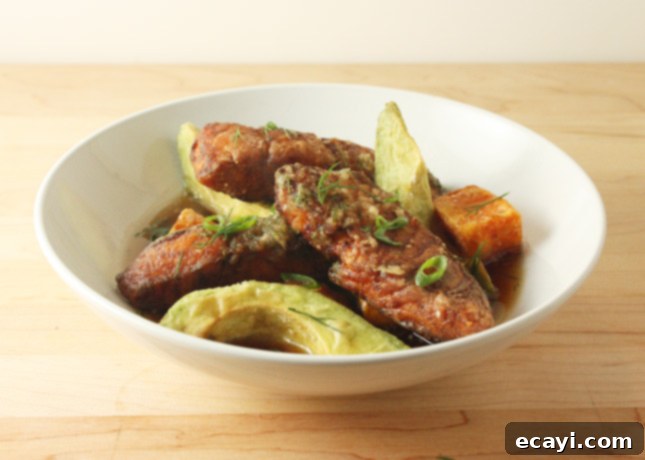
This post contains affiliate links. Full disclosure is at the bottom of the article.
For many home cooks, the vibrant and nuanced world of Japanese cuisine can seem daunting. After a transformative trip to Japan, I found myself captivated by its culinary traditions, yet deeply intimidated by the prospect of recreating those delicate, umami-rich flavors in my own kitchen. While I’ve dabbled in the occasional miso soup or a satisfying ramen bowl, most authentic Japanese dishes I encountered felt too intricate and time-consuming for regular weeknight meals. The profound knowledge required to master specific techniques and balance subtle flavors often left me feeling as though truly Japanese-inspired cooking was beyond my reach.
My perspective began to shift last spring when I had the immense pleasure of attending a ramen-making class taught by the renowned cookbook author Hiroko Shimbo in New York. The anticipation for this session, part of a conference I was attending, had been building for months. During the class, Hiroko introduced a revolutionary concept: a playful approach to ramen preparation that encouraged using seasonal and unexpected ingredients instead of strictly adhering to classic components. I watched, fascinated, as she incorporated Brussels sprouts and Swiss chard into the soup – an idea I had never encountered or even considered. Her encouragement to seasonally adapt dishes resonated deeply with me. Hiroko’s cooking and teaching style were refreshingly straightforward and incredibly practical, filled with simple yet impactful tips that immediately made complex ideas feel accessible. It was a revelation.
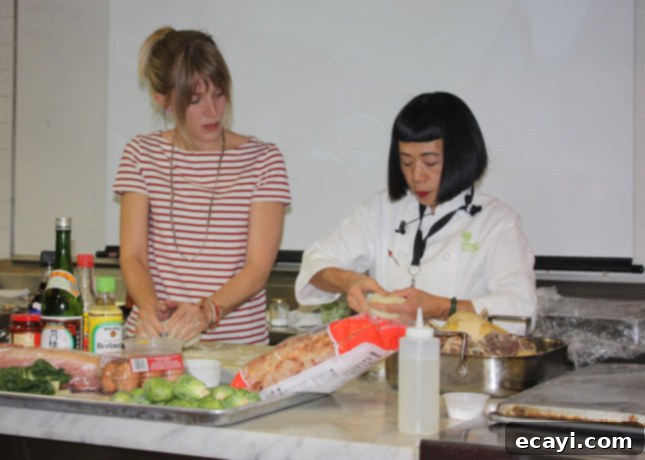
Photo Credit: Nancy Singleton Hachisu
After the class, I confessed my ongoing struggles with incorporating Japanese cuisine into our daily lives. Hiroko listened empathetically, assuring me that her upcoming book was designed specifically to address these common challenges. She had heard my story countless times before and had devised a brilliant system to demystify Japanese flavors, allowing home cooks to effortlessly integrate them into a wide array of dishes. Her description sounded tailor-made for me, and I left our conversation filled with renewed hope that we would soon be enjoying the exquisite tastes we had cherished in Japan, right in the comfort of our own home.
The core philosophy behind Hiroko’s American Kitchen: Cooking with Japanese Flavors is astonishingly simple yet profoundly effective: with just two fundamental broths and four versatile sauces, you can unlock the potential to create hundreds of distinct Japanese-inspired dishes with remarkable speed and ease. Hiroko champions the practice of preparing these essential broths and sauces in larger batches, in advance. She suggests portioning and freezing them when necessary, ensuring that these flavorful building blocks are always readily available. This means you can whip up a Japanese meal on a whim, without the usual time commitment. The book is thoughtfully structured into six chapters, each dedicated to one of these foundational broths or sauces. Within each chapter, readers discover appealing recipes that showcase the versatility of these bases, alongside invaluable pointers on how to adapt them for countless other culinary creations.
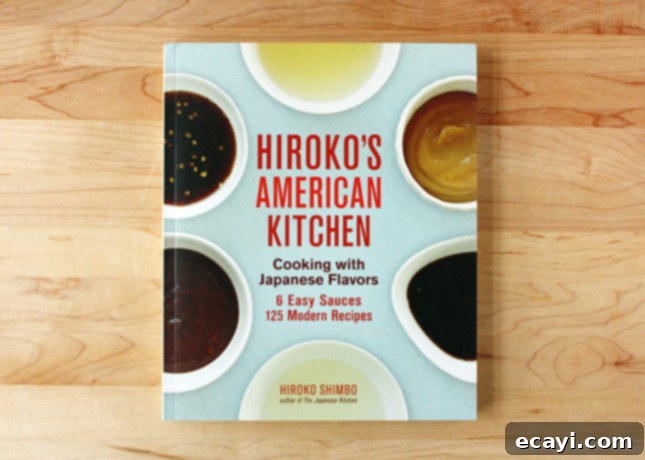
Since acquiring the book, I’ve already prepared four of her six signature sauces, and each recipe I’ve tried has been a resounding success. The simplicity of making these sauces belies their incredible depth and complexity—a hallmark of authentic Japanese cuisine. Throughout the book, Hiroko strategically places detailed pages highlighting fundamental Japanese cooking techniques, such as the proper preparation of noodles and rice. I found that internalizing these seemingly minor tips made a monumental difference to my finished dishes. In Japanese cooking, true mastery often lies in the meticulous attention to detail. Learning critical lessons, like why you should never salt the water for cooking noodles, how to employ the sashimizu technique (adding cold water twice during the cooking process for perfectly even noodle texture), and the crucial importance of rinsing noodles under cold water (and how to reheat them without compromising quality), transforms ordinary meals into carefully crafted culinary experiences. These precise details, which remarkably add almost no extra preparation time, fundamentally elevate the quality of the food.
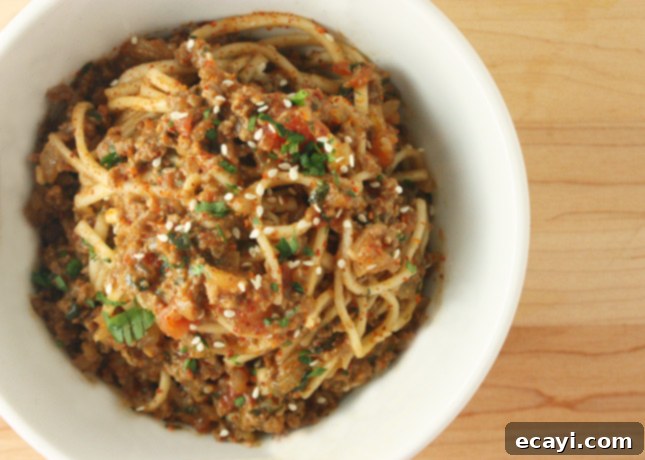
Miso-Beef Ragu and Udon Noodles. A Japanese answer to Bolognese sauce.
What I value most about Hiroko’s book is her reassuring, down-to-earth tone. Her clear instructions and the rich background information she provides for each recipe and technique instilled in me a newfound confidence. She expertly guides novices to a deeper understanding of Japanese cuisine, empowering them to work confidently with Japanese flavors. Far from advocating strict adherence to rigid traditional dishes, Hiroko strongly encourages cooks to embrace readily available and seasonal ingredients. She profoundly states, “Answering the question of what is truly ‘authentic’ is a discussion that can consume a lifetime.” She goes on to explain that, for her, the stereotypical miso soup with predictable ingredients like tofu, seaweed, and scallions can be quite dull. Instead, she argues that the true flavor and spirit of miso soup reside in the dashi stock and miso paste, providing a canvas for personal creativity. This philosophy is wonderfully exemplified by her enticing chunky potato and leek soup, brilliantly enhanced with miso – and even bacon!
The recipes I’ve explored from Hiroko’s book span a wide spectrum, from beloved classics like chicken donburi (a flavorful rice bowl) to delightfully innovative snacks such as her utterly addictive curried miso peanuts. The beauty is that most of these dishes are perfectly suited for weeknight cooking; with the essential sauce or broth prepped and on hand, assembly is remarkably quick. Yet, many of them are also impressive enough to grace a special occasion, showcasing that elegant, speedy preparation is always a winning combination. Hiroko’s American Kitchen abounds with such culinary treasures. This book has truly become an essential reference for any enthusiast of Japanese cuisine, whether they are taking their first steps as a novice or are seasoned cooks seeking innovative new recipes and perspectives from Hiroko. It has certainly cemented its place in my kitchen, and I eagerly anticipate continuing my culinary explorations with it.
To further deepen your understanding and appreciation of Japanese cuisine, I highly recommend exploring Hiroko’s other insightful books, The Japanese Kitchen and The Sushi Experience.
Full Disclosure: I received a complimentary copy of Hiroko Shimbo’s book from her publisher, Andrew McMeel Publishing. All opinions expressed are my own and reflect my genuine experience.
Recipe: Japanese Fried Salmon with Avocado and Dill-Daikon Broth
Among the many wonderful recipes in Hiroko’s book, this dish of Japanese Fried Salmon with Avocado and Dill-Daikon Broth stands out as the most revelatory. It beautifully encapsulates Hiroko’s ingenious ability to infuse classic flavors, like salmon and dill, with distinctive Japanese elements such as grated daikon and a delicate dashi broth. The salmon and vegetables are lightly fried, achieving a surprisingly crispy texture that holds up wonderfully, even when submerged in the broth (provided, of course, that you serve it immediately). The broth itself is a masterpiece of subtlety and complexity, creating a deeply satisfying experience that feels perfectly suited for any time of year. While the recipe yields four appetizer-sized servings, its exquisite flavor profile often leaves guests wanting more. I wholeheartedly encourage you to elevate it to a main course, perhaps accompanied by a bowl of fluffy steamed rice and a crisp, light salad. Should you find yourself with leftovers, allow the fried vegetables and salmon to cool completely before storing them separately from the broth. To reheat, simply place the salmon and vegetables on a baking sheet and warm them in a 300°F (150°C) oven for about 10 minutes, flipping them halfway through. This method will restore their delightful crispiness, allowing you to enjoy the dish almost as if it were freshly prepared.
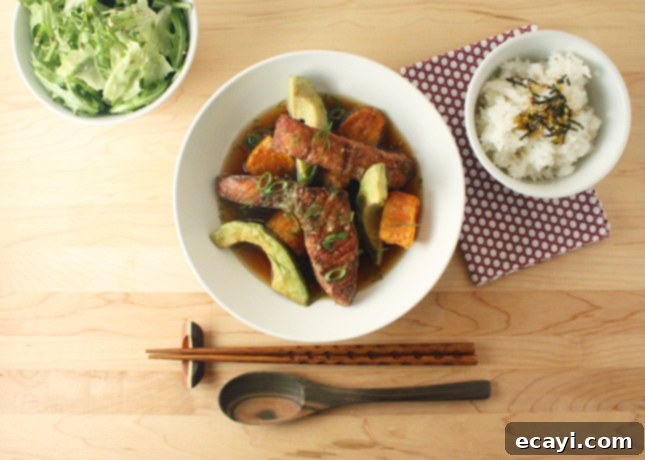
Serves 4 as a first course, or 2-3 as a main meal
Ingredients:
- 1 lb [454 g] boneless, skinless salmon fillet
- 3½ tbsp [52 ml] soy sauce
- 2½ tbsp [37 ml] mirin
- ¼ cup cornstarch
- 1 small sweet potato (approximately 5 oz [140 g])
- 1 avocado
- 2 cups dashi stock
- ¾ tsp [3.75 ml] sea salt
- 2 tbsp [30 ml] finely grated daikon radish, gently drained of excess water (do not press firmly)
- 1-2 tsp [5-10 ml] fresh dill, finely chopped
- Canola oil, for frying
Instructions:
- Begin by cutting the salmon fillet into 8 uniform pieces. In a medium bowl, gently toss the salmon pieces with 1 tablespoon [15 ml] each of the soy sauce and mirin. Allow the salmon to marinate for 20 minutes to absorb these initial flavors. After marinating, drain the salmon thoroughly and lightly pat each piece dry with a paper towel. This step is crucial for achieving a crispy exterior. Dust the dried salmon pieces evenly with cornstarch and let them rest for another 20 minutes.
- While the salmon rests, prepare the sweet potato. Cut the sweet potato into 1½-inch [3¾-cm] cubes. Place the sweet potato cubes in a pot of cold water and bring to a simmer over medium heat. Once simmering, reduce the heat to medium-low and cook the potato pieces for approximately 10 minutes, or until just tender. Drain the sweet potato pieces thoroughly in a colander, then allow them to cool and dry completely. Next, pit, peel, and cut the avocado in half lengthwise. Slice each avocado half into 4 wedges. Lightly dust both the sweet potato and avocado pieces with cornstarch and let them stand for 15 minutes.
- Prepare the broth: In a saucepan, combine the dashi stock, the remaining 2½ tablespoons [37 ml] soy sauce, the remaining 1½ tablespoons [22 ml] mirin, and the sea salt. Place the saucepan over medium heat and bring the mixture to a gentle simmer. Once simmering, turn off the heat and set the broth aside. In a small separate bowl, toss the finely grated daikon radish with the chopped fresh dill.
- Heat the frying oil: Pour about 2 inches [5 cm] of canola oil into a deep skillet or Dutch oven. Heat the oil to 340°F [170°C].
- Fry the sweet potato: Carefully add the prepared sweet potato pieces to the hot oil. Cook for about 2 minutes, or until all sides are lightly golden, turning the pieces occasionally for even cooking. Using a slotted spoon, transfer the fried sweet potato to a wire rack set over a sheet pan to drain excess oil.
- Fry the salmon: While the sweet potato is cooking, re-dust the salmon pieces with any remaining cornstarch to ensure a fresh, even coating. Add the salmon to the skillet and cook in two or three batches to avoid overcrowding the pan. Cook each batch for 4 to 5 minutes, or until the salmon is cooked through and its exterior is beautifully golden and crisp. Turn the fish once or twice during cooking. Once cooked, use a slotted spoon to transfer the salmon to the wire rack alongside the sweet potato.
- Fry the avocado: Increase the oil temperature to 350°F [175°C]. Carefully add the avocado wedges to the hot oil and cook for about 2 minutes, or until the outside is lightly golden and crisp. Using a slotted spoon, transfer the avocado to the wire rack.
- Assemble and serve: Divide the crispy salmon, sweet potato, and avocado evenly among warm serving bowls. Reheat the reserved broth over medium heat, bringing it back to a gentle simmer. Add the daikon and dill mixture to the hot broth just before serving. Immediately pour the steaming broth generously over the ingredients in each bowl. Serve this exquisite dish piping hot for the best experience.
Recipe Credit: This exceptional recipe has been thoughtfully adapted from Hiroko Shimbo’s inspiring cookbook, Hiroko’s American Kitchen: Cooking with Japanese Flavors.
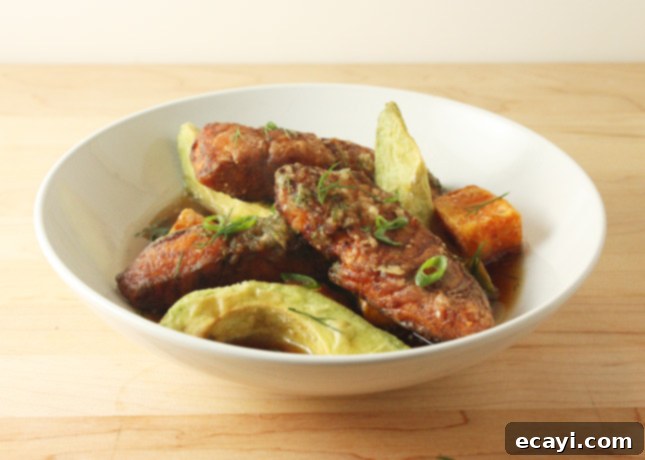
Disclosure Notice: This site is a proud participant in the Amazon Associates Program, an affiliate advertising program meticulously designed to provide a means for the site to earn advertising fees by linking to Amazon.com and other affiliated sites.
Please be aware that if you choose to click on an affiliate link and subsequently make a purchase through such links, I may earn a small advertising or referral fee. This comes at no additional cost to you whatsoever. Your support through these links is invaluable, as it helps me continue creating fresh and engaging content for the blog – for which I am truly grateful! To learn more about the advertising practices on this site, please refer to my comprehensive Disclosure Policy.
